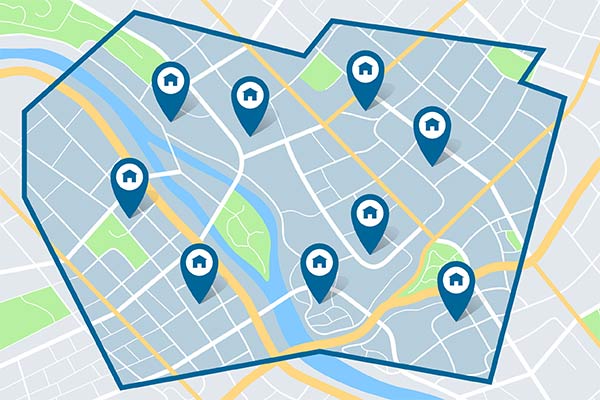InsTech London’s Ali Smedley speaks with Jes Westerman about the differences between address and postcode-level data for risk assessment, the challenges with using address-level data, and how Verisk’s Data Insight Hub can help insurers. This conversation is also available to download as a PDF.
Ali: How is Verisk working with insurers to improve risk assessment and pricing?
Jes: Verisk uses data enrichment and predictive modelling to help insurers assess and price risk, improve underwriting and claims outcomes, and build resilience to extreme events.
One of its offerings is the Data Insight Hub, a source of data sets and analytics linked to an insurer via an API. It includes information such as residential and commercial property attributes, rebuild costs and peril models. It helps insurers to access data for hazards, such as flood, on an individual address level.
Ali: What are the differences between assessing flood risk on a postcode level compared to an individual address level?
Jes: Insurers have assessed flood risk at postcode or sector level for years. Postcode and sector-level scores tend to provide an average or worst-case scenario across the area. As flood and other peril models have improved, it has become easier to get access to more granular data at address level. Using address level data allows insurers to identify risks that are better than average and to price risks more effectively. This gives insurers a market advantage.
Ali: What are the challenges of using data at the level of individual property address?
Jes: While using data at the level of an individual address provides advantages to the insurer, there are also challenges with using such data.
Accessing accurate data
There are providers in the marketplace that provide good flood models, but these models don’t always agree with each other. A lot of factors go into flood modelling – there’s a lot of complexity whether it’s pluvial, fluvial or coastal flooding. There is always a level of uncertainty, and as a result some insurers are exploring the use of multiple models and data.
Hosting large data sets
Legacy IT and the size of an address-level data set mean that it can be difficult for an insurer to host the file on their server or to use it directly as they may have done with postcode-level data and scores. An insurer’s IT also needs to take data updates and upload them safely on a regular basis, which can be challenging to manage.
Address matching
Insurers receive addresses directly from the customer, broker or from an aggregator. Sometimes there may be errors because it has been manually and incorrectly input. In addition, the quality can get downgraded through stages of transformation as it moves between third-party systems. Addresses must be converted into either a UPRN (Unique Property Reference Number) or a UDPRN (Unique Delivery Point Reference Number) to be able to find useful data. A high-quality match is required to be able to search data or return geocode information.
Ali: How does Verisk’s Data Insight Hub help with these challenges?
Jes: Verisk has optimised the Data Insight Hub’s address matching for both residential and commercial properties to improve the match rate and accuracy of data returned against a given address. The Hub hosts a wide range of Verisk and also third-party models and data, most of which are at address level. Verisk manages these large data sets and keeps them up to date so that insurers don’t have to. The Hub also has built-in tools to allow new data sets to be added rapidly. Insurers can access the data in real time and at the high volumes required when working with price comparison sites.
Ali: What companies does the Data Insight Hub have data sets and models from?
Jes: For flood, the Hub uses JBA’s Comprehensive Flood Map (CFM) data and annual damage ratio data. Ambiental is another provider of equivalent data sets that are also available through the Hub. In terms of building characteristics, Verisk has its own data acquired from satellite imagery, supplemented by various third-party data sets. We have an ongoing programme of work to expand our address-level data sets to other perils such as escape of water (i.e. internal flooding caused by burst pipes).
Ali: What locations are covered by the Data Insight Hub?
Jes: Currently, the majority of the data in the Hub is for the UK. Verisk has a sister company in Ireland that provides motor data, and we’re looking to expand into property data there as well. We are also working on several projects in France and Germany.
Ali: Jes, what is your role at Verisk?
Jes: Most of my career has been spent within the IT, data, and insurance industries. Now at Verisk, I am Head of Strategic Projects where I focus on building a road map of innovative data solutions to help insurers with underwriting, pricing, and decision-making.
For more information on Verisk, go to verisk.com.


